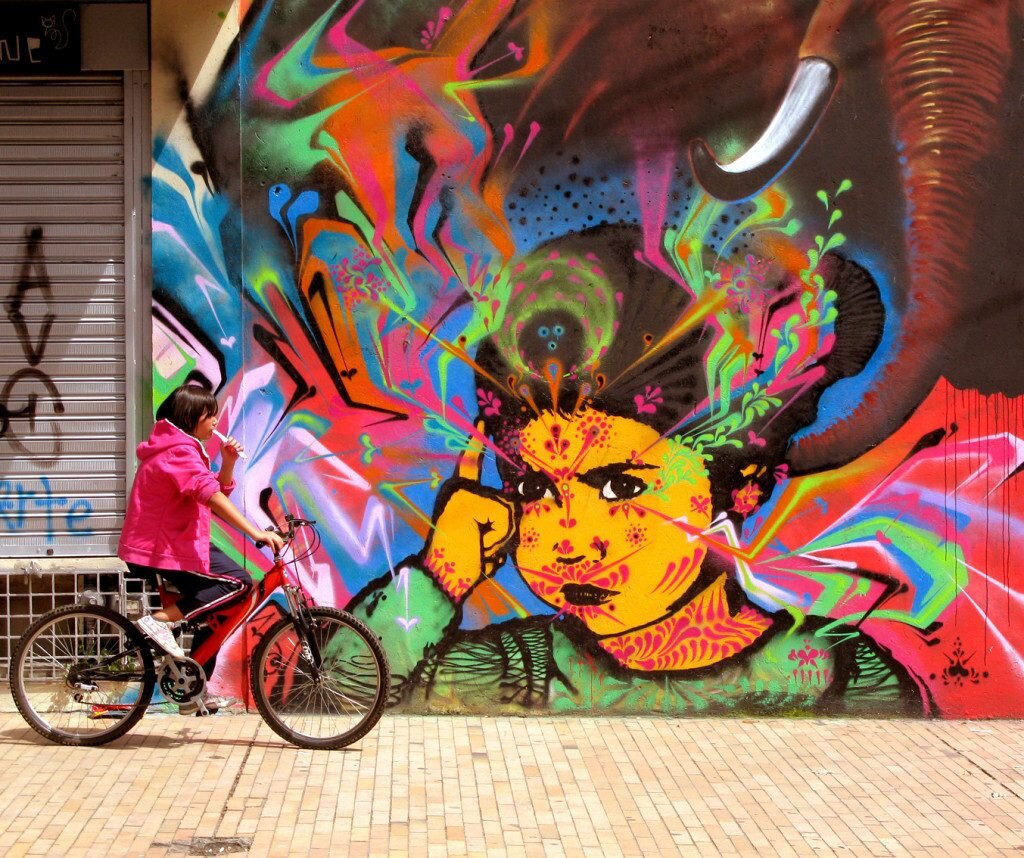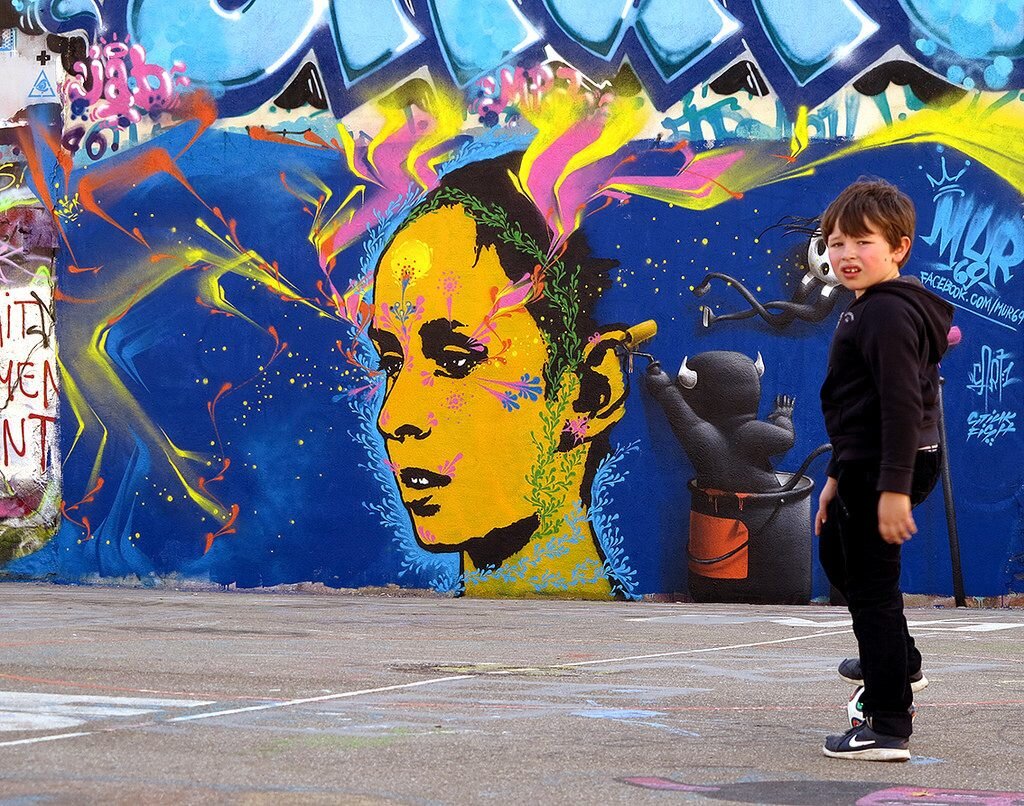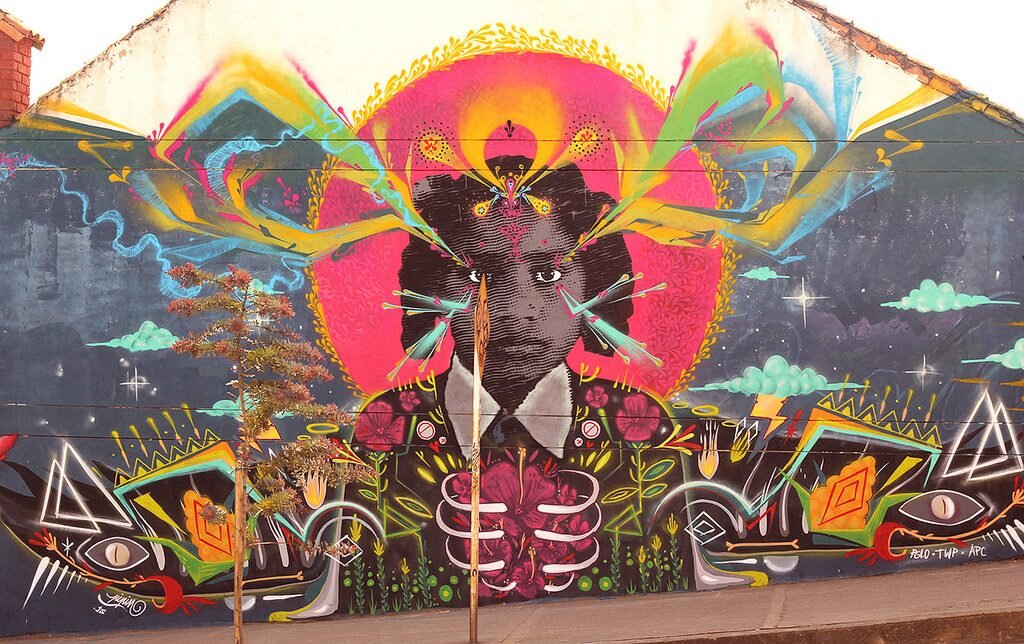Artist Feature: Stinkfish
"The streets must be a free space..."
“Graffiti is vandalism, destruction, revolution, freedom, and love. My life revolves almost entirely around graffiti.” – Stinkfish
I have always used “street art” as an umbrella term for any art form that is in a public space; murals, sculpture, wheat-pasting, yarn bombing, stencil-graffiti… However, there is a certain sector of street artists that sometimes doesn’t prefer to be considered artists, but graffitists. Stinkfish is a graffitist. When asked about what he considers himself, he explains, “I feel comfortable working for the concept of graffiti, basically by the principles of independence, anonymity, freedom and illegality… I believe in doing what I like out of conviction, without permission. Doing what I wish to do with what I have at hand in the place I want and when I want to, without thinking about health insurance, a salary or a pat on the back.”
Despite this possible dichotomy between street art and graffiti, neither art form should be considered more culturally valid than the other. I’ve heard the differences described as one promotes construction while the other, destruction. I don’t totally agree with this, at least in some instances. So, construction when there is a monetary gain and the contrary if it is the goal to make a mark across the breadth of a city, often under time constraints imposed by the risk of imprisonment or fines? In the end, both take risks to give us visually striking, bold images and metaphors that convey a message. “There are many messages, some more obvious than others, but the one that interests me most is the global graffiti message: The streets must be a free space, for building real politics, where everyone has the chance to say and observe at the same level, such life itself could be a way from the prefabricated world in which we are born.”
In the graffiti art of Stinkfish, he creates portraiture of ordinary people with an added stylistic psychedelic flare. It is as if the people in his portraits are transcending in some way. Never without his camera, he photo documents the chaos of the day to day life around him. He feels the street is a space for coexisting and sharing, a place to transgress and create another forms of communication between people. Another very important factor in his work, is its integration into the common neighborhood. “Regarding the portraits I do, the idea is to speak about the importance of common people, like you, like me, like everyone in the common life, far away from the false world of the ‘famous’ and ‘important’ people of this system. My work is focused around the idea that a portrait captures the daily lives of real people living face to face.”
Whatever you want to call it, both hold no limits and give anyone the opportunity to participate. To me, this is art in one of its rawest forms.
+ + +
Stinkfish was born in Mexico in the early 80s. His family migrated to Columbia at an early age, where he has spent most of his life and began his work as a graffitist. His graffiti first emerged as a teen with his “Stink” tag, which later became “Stinkfish.” He started using stencils in 2000 and finally in 2003, he created his first street art portrait in remembrance of John F. Kennedy’s murder. He has also used the alias names Knits, Quetzal, and Hate. Stinkfish believes that it’s in the human nature to intervene with one’s habitat, leaving some kind of personal mark. He lives and works in Bogotá, Colombia. His graffiti portraiture can be found throughout the world including the UK, China, France, and Vietnam.























